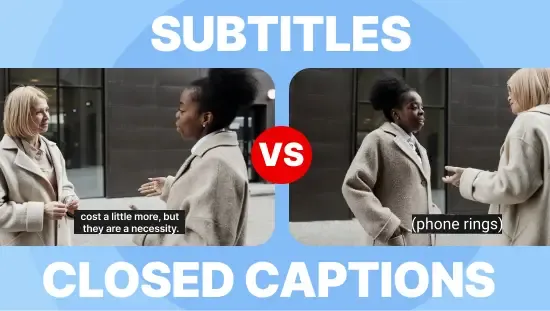Subtitles vs Closed Captions
March 2023
·
1 min read

Captions and subtitles are the texts we turn on when we watch a foreign movie, or when we watch a video without sound. However, the terms "subtitles" and "closed captions" are often used interchangeably, leading to confusion about their differences and when to use one over the other.
In this article, we aim to clarify the distinctions between subtitles and closed captions.
Differences Between Subtitles and Closed Captions
While subtitles and closed captions might seem similar, they have significant differences in terms of content and purpose.
The primary difference between the two is that subtitles are mainly used to translate the dialogue while closed captions provide a more detailed and immersive experience for viewers.
Subtitles are often used to translate the dialogue of a video into another language like german to english while closed captions are used to provide a transcription of the video’s audio, including non-verbal elements, for viewers who are hard of hearing or in noisy environments.
Which One Should You Choose?
The choice between subtitles and closed captions depends on the content of your video and your target audience.
If your video contains dialogue in a language that your target audience does not speak, then you should use subtitles.
On the other hand, if your video contains important non-verbal elements such as music, sound effects, and background noise, then you should use closed captions to provide a more immersive experience for your viewers.
Note: Closed captions are essential for compliance with the Americans with Disabilities Act (ADA), which requires businesses to provide equal access to information for people with disabilities. By adding closed captions to your videos, you ensure that your content is accessible to a broader audience, including those who are deaf or hard of hearing.
Conclusion
Understanding the differences between subtitles and closed captions is crucial to make an informed decision about how to make your content accessible to all. With this in mind, you can increase the impact of your next video project.
If you need captioning and subtitling solutions for your next video project or translating your next video campaign, Reduct can help. We provide a range of language services including subtitling, captions, translation, and much more.
Reduct’s captioning service makes adding subtitles or captions easy. Just upload your video files onto our platform and we’ll do the rest. Get started with Reduct today!


